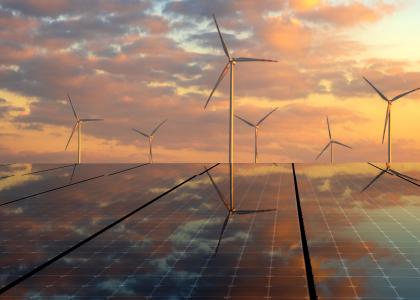The past year included many successes, including quite a few that we can build on in the new year. Among the notable developments in 2015:
There is growing recognition that energy efficiency is the lowest-cost resource, and investments in energy efficiency continue to grow. The International Energy Agency estimates that more than $300 billion is being invested annually in energy efficiency worldwide, and this figure is growing. This is illustrated in the United States by continued growth in utility energy efficiency spending and savings achieved.
Further efficiency savings are likely to be driven by the recently concluded Paris International Climate Agreement and by the US Clean Power Plan.
States continue to embrace energy efficiency. For example, the Maryland Public Service Commission significantly increased energy savings targets for the state’s utilities, California enacted a law to double statewide energy efficiency savings by 2030, and Massachusetts utilities are proposing to raise electricity savings to nearly 3% per year by 2018.
Cities are becoming increasingly active with their energy efficiency efforts. Atlanta, Portland, and Kansas City all enacted energy benchmarking ordinances covering portions of their building stocks (typically large buildings), and Los Angeles introduced its Sustainable City PLAn, which includes strategies for energy efficiency to deliver savings equivalent to 15% of all of the city's projected electricity use by 2020.
Intelligent efficiency (the systemic approach to saving energy that marries traditional energy efficiency with wireless and cloud-based computer technologies, enhancing our ability to gather, interpret, and act upon energy information in order to improve performance and achieve new levels of energy savings) advanced significantly, with a growing number of innovative companies providing new services.
In Washington, energy efficiency continues to have bipartisan support, with the president signing a modest energy efficiency bill early in the year. It’s notable that energy efficiency was one of the only energy items (along with oil exports and extensions of renewable energy tax incentives) to be enacted (the latter items as part of an end-of-the-year omnibus budget bill).
There was also substantial progress strengthening energy efficiency standards for equipment and trucks, including new standards for commercial rooftop air conditioners and proposed new standards for heavy duty trucks.
This was also a notable year for ACEEE, as we celebrated our 35th anniversary. We marked this milestone by publishing a paper looking back at energy efficiency accomplishments over the past 35 years and opportunities over the next 35 years. Some of the key graphics on progress can be found in ACEEE’s Data Points series of blogs.
Looking Ahead to 2016
Turning now to the year ahead, we see multiple opportunities:
States will be looking for opportunities to reduce energy bills and reduce carbon emissions, spurred in part by the Clean Power Plan. We estimate that energy efficiency can achieve more than half of the needed emissions, while reducing energy bills relative to a business-as-usual scenario. States that will be considering ways to expand energy efficiency this year include Mississippi (as part of a process to develop full-scale programs) and Georgia (as part of their IRP process). And cities will continue to look at ways they can improve their resiliency, including expanding energy efficiency opportunities.
Utility sector reform is likely to receive increased attention as reform processes continue in New York, Minnesota, and California, and a few more states may consider similar processes. Rate design is also likely to receive increased attention as utilities seek to cover the costs of serving changing load shapes. We see time-of-use rates getting increased attention, given opposition to other options such as higher fixed charges. The details will be critical, as they will affect whether the changes are helpful or harmful to energy efficiency efforts.
At the national level, final fuel economy standards for heavy trucks are scheduled to be issued this spring, and the Department of Energy plans an ambitious slate of final standards as part of efforts to meet the president’s target for savings from standards. New efficiency standards for manufactured homes are also likely, building on a consensus agreement among stakeholders. And Congress will try to enact energy legislation, although finding something that the House, Senate and the president can agree on will be challenging. (There are some notable efficiency provisions in the current Senate bill, though the current House bill would do more harm to efficiency than good).
And energy efficiency is likely to get some attention in the presidential campaign as several candidates, including Clinton, Kasich, Rubio, and Sanders, have talked about energy efficiency.
On the other hand, there are also likely to be challenges in the coming year. Ohio and Indiana scaled back their utility-funded programs in 2014, and similar challenges periodically crop up in other states. For example, Michigan is currently debating energy efficiency policy, including a possible rollback of energy-saving targets for utilities. Likewise, there are periodic attempts to scale back some federal energy efficiency laws, especially in the House of Representatives. Efficiency supporters need to remain vigilant and push back when needed.
At ACEEE, we will be expanding technical assistance to states and cities, including on the Clean Power Plan and on programs and policies serving low-income communities. We will be conducting research on an array of issues, including intelligent efficiency, utility rates, green banks, and programs targeting low-income households, financing, behavior, and small/medium businesses. We will also be working on the role of energy efficiency in future federal tax reform and we have a full array of six conferences planned.
Overall, substantial progress was made on energy efficiency in 2015, and we are poised to continue this progress in 2016.



